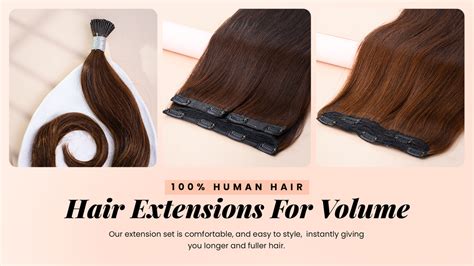Thin hair can be a major source of frustration, leaving individuals feeling self-conscious about their appearance. However, hair weaving offers a transformative solution, allowing those with fine or thinning hair to achieve luscious, voluminous locks.

Understanding Hair Weaving
Hair weaving is a technique that involves adding extensions to natural hair using specialized threads or bonds. These extensions can be made from synthetic or natural hair, and are meticulously blended with existing hair to create a seamless, fuller look.
Types of Hair Weaving
Various hair weaving techniques exist, each with its own advantages and disadvantages. Some popular methods include:
- Track Wefting: Weft-like strips of hair are sewn onto parallel rows of cornrows or braids.
- Fusion: Individual strands of hair are bonded to natural hair using heated keratin or glue.
- Micro-Links: Tiny metal rings or beads are used to attach hair extensions to natural hair.
- Microbeads: Small silicone beads are clamped onto bonded hair and natural hair to create a more discreet connection.
Benefits of Hair Weaving for Thin Hair
Hair weaving offers numerous benefits for individuals with thin hair, including:
- Increased Volume and Density: Extensions significantly enhance the body and thickness of thin hair.
- Versatile Styling Options: Extensions allow for a wide range of hairstyles, from elegant updos to voluminous curls.
- Concealed Hair Loss: Hair weaving can effectively camouflage thinning areas or bald patches.
- Low Maintenance: Once installed, hair extensions can last for several months with proper care.
- Enhanced Confidence: Fuller, healthier-looking hair can boost self-esteem and confidence.
Addressing Pain Points
Despite its benefits, hair weaving can present some potential challenges:
- Cost: Hair extensions can be a significant investment, especially when opting for natural hair or professional installation.
- Maintenance: Extensions require regular maintenance to prevent tangling, breakage, and scalp irritation.
- Damage Risk: Improper installation or removal techniques can damage natural hair.
- Limited Styling Options: Some hair weaving methods may restrict certain styling techniques, such as high ponytails or tight braids.
Motivations for Hair Weaving
Individuals seek hair weaving for a variety of reasons, including:
- Desire for thicker, fuller hair
- Concealment of thinning hair or baldness
- Fashion statement or personal expression
- Special occasions or events
- Improved confidence and self-esteem
Effective Strategies
To achieve successful hair weaving results, consider the following strategies:
- Choose a Reputable Salon: Seek a licensed and experienced hairstylist specializing in hair extensions.
- Determine Optimal Method: Discuss with your hairstylist the most suitable weaving technique based on your hair type and desired outcome.
- Match Hair Quality: Ensure extensions closely match the texture and color of your natural hair.
- Establish Realistic Expectations: Understand that hair weaving will not completely transform thin hair into thick hair, but it can create a fuller, more manageable look.
- Prioritize Hair Health: Follow professional maintenance instructions to prevent hair damage and ensure extensions remain in good condition.
Step-by-Step Approach
The hair weaving process typically involves the following steps:
- Sectioning and Braiding: The hairstylist divides hair into sections and braids or cornrows along the desired application areas.
- Attachment: Extensions are attached to the braids or cornrows using the chosen weaving method.
- Blending: Extensions are meticulously blended with natural hair using scissors or other tools.
- Styling: Once extensions are secure, your hairstylist will style your hair as desired.
- Maintenance: Regular appointments are necessary to adjust extensions, prevent tangling, and maintain hair health.
Additional Considerations
- Temporary vs. Permanent: Hair weaving methods can be either temporary or permanent, lasting from a few weeks to several months.
- Synthetic vs. Natural Hair: Synthetic extensions are more affordable but may lack the natural look and feel of human hair.
- Matching Hair Color: Ensuring a close match between hair extensions and natural hair color is crucial for a seamless transition.
- Professional Installation: While home hair weaving kits are available, professional installation is highly recommended to prevent damage and ensure optimal results.
Tables
Table 1: Types of Hair Weaving Methods
| Method | Description |
|---|---|
| Track Wefting | Weft-like strips of hair sewn onto braids or cornrows |
| Fusion | Individual strands of hair bonded to natural hair using heat |
| Micro-Links | Metal rings or beads used to attach extensions to natural hair |
| Microbeads | Silicone beads clamped onto hair extensions and natural hair |
Table 2: Benefits of Hair Weaving for Thin Hair
| Benefit | Description |
|---|---|
| Increased Volume and Density | Extensions add body and thickness to thin hair |
| Versatile Styling Options | Wide range of hairstyles possible |
| Concealed Hair Loss | Camouflages thinning areas or bald patches |
| Low Maintenance | Extensions can last for months with proper care |
| Enhanced Confidence | Fuller hair boosts self-esteem |
Table 3: Motivations for Hair Weaving
| Motivation | Description |
|---|---|
| Desire for thicker hair | Enhanced confidence and appearance |
| Concealment of hair loss | Camouflaged thinning or baldness |
| Fashion statement | Personal expression and style |
| Special occasions | Special events or celebrations |
| Improved confidence | Boost in self-esteem and well-being |
Table 4: Pain Points of Hair Weaving
| Pain Point | Description |
|---|---|
| Cost | High investment for professional installation and natural hair extensions |
| Maintenance | Regular visits for adjustments and upkeep |
| Damage Risk | Potential for hair breakage or scalp irritation if improperly installed or removed |
| Styling Limitations | Restrictions on certain hairstyles with some weaving methods |
